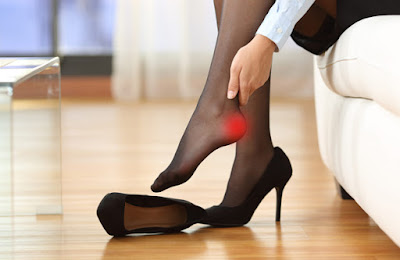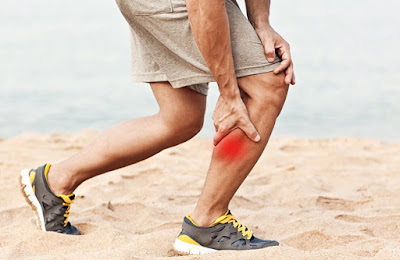Yep, if you’re very flexible and you’ve found that you sustain more injuries during sport than your fellow teammates, you’d be right. And it’s got nothing to do with accidents or clumsiness – the structure of your joints and tissues is actually putting you at a higher risk! This blog is for all adults and parents of kids that are very flexible, or ‘hypermobile’ as we classify it, and we’ll give you the low-down on WHY this is the case, WHAT the studies have found and HOW you can reduce the risk of injury specifically in one of our favourite sports, netball.
The low-down on hypermobility
Joint hypermobility, or joint laxity, can be defined as having joints that exceed the normal range of motion for that joint. Without getting into the exact degrees that are and aren’t normal for every joint, just ask yourself this: can you twist or move your joints past what looks normal and get comments from others about how flexible you are (without stretching and working hard to be that flexible)? If you answered YES on behalf of yourself or your child, then there’s a good chance that you or they may be hypermobile.
While hypermobility can serve for many cool party tricks and make you naturally talented when it comes to gymnastics, it also brings with it some significant challenges. These are around the increased prevalence of injuries both during sport and everyday life. Because the joints allow for a broader range of movement, there is a higher chance that the bones may move out of place within the joint (subluxation), dislocate or sprain.
Clinical studies have proved increased injury rates in hypermobility
Studies have already shown the significant injury rates in Netball in Australia, and hypermobility has also been studied in relation to Netball injuries. The findings of a 2005 study that examined 200 netball players in Australia showed that there was a statistically significant relationship between self-reported injuries and the presence of hypermobility, with 35% sustaining an injury while playing (Smith et al., 2005).
Other studies that have looked at the greatest risk factors for injury in non-elite netball did not identify hypermobility as a risk, instead identifying them as not warming up before the game and not being open to new ideas (McManus et al., 2006). This means that while having hypermobility can make you more susceptible to injury, there are numerous other factors that can also increase your injury risk.
The implications for us and you
The good news is that if you know you have hypermobile joints then you can work on specific training techniques that work on strengthening the framework around joints, particularly those that are often injured in netball such as the ankle. Better yet – we can help you do that and form a pre-season strengthening and training plan specific to you, your level of activity and the range of motion you have in your joints. We can also use other supports to reduce your risk of injury and give you greater stability and control during play, such as:
Combined with good warm-ups and cool-downs and other identified risk factors for injury in netball, you’ll be doing the best by your feet and joints for the game. This’ll help not only in netball, but also during other sporting activities that use similar motions (such as quick side to side movement and rapid changes in direction is soccer), as well as during everyday life – such as spraining your ankle on the sidewalk.
A final note from a podiatrist with joint hypermobility syndrome
Our final note as a podiatrist that is very much hypermobile is that the implications of not looking after and strengthening your joints can be significant and should be taken seriously. It takes time and effort to strengthen joints, especially around the foot and ankle, but is well worth it to avoid painful injuries that may have long-term consequences. Footwear is also something that should be invested into, as good shoes are a fantastic support to very mobile feet and give lots of stability to the ankle.
If you’ve got hypermobility and are worried about the effects not only for netball but other sports or activities, give our team a call on 1300-FX-FEET. We’d love to help you perform at your best and reduce your risk of injury. You can also book online here.
The low-down on hypermobility
Joint hypermobility, or joint laxity, can be defined as having joints that exceed the normal range of motion for that joint. Without getting into the exact degrees that are and aren’t normal for every joint, just ask yourself this: can you twist or move your joints past what looks normal and get comments from others about how flexible you are (without stretching and working hard to be that flexible)? If you answered YES on behalf of yourself or your child, then there’s a good chance that you or they may be hypermobile.
While hypermobility can serve for many cool party tricks and make you naturally talented when it comes to gymnastics, it also brings with it some significant challenges. These are around the increased prevalence of injuries both during sport and everyday life. Because the joints allow for a broader range of movement, there is a higher chance that the bones may move out of place within the joint (subluxation), dislocate or sprain.
Clinical studies have proved increased injury rates in hypermobility
Studies have already shown the significant injury rates in Netball in Australia, and hypermobility has also been studied in relation to Netball injuries. The findings of a 2005 study that examined 200 netball players in Australia showed that there was a statistically significant relationship between self-reported injuries and the presence of hypermobility, with 35% sustaining an injury while playing (Smith et al., 2005).
Other studies that have looked at the greatest risk factors for injury in non-elite netball did not identify hypermobility as a risk, instead identifying them as not warming up before the game and not being open to new ideas (McManus et al., 2006). This means that while having hypermobility can make you more susceptible to injury, there are numerous other factors that can also increase your injury risk.
The implications for us and you
The good news is that if you know you have hypermobile joints then you can work on specific training techniques that work on strengthening the framework around joints, particularly those that are often injured in netball such as the ankle. Better yet – we can help you do that and form a pre-season strengthening and training plan specific to you, your level of activity and the range of motion you have in your joints. We can also use other supports to reduce your risk of injury and give you greater stability and control during play, such as:
- Strapping
- Bracing and guards
- Orthotics
- Specific supportive footwear
Combined with good warm-ups and cool-downs and other identified risk factors for injury in netball, you’ll be doing the best by your feet and joints for the game. This’ll help not only in netball, but also during other sporting activities that use similar motions (such as quick side to side movement and rapid changes in direction is soccer), as well as during everyday life – such as spraining your ankle on the sidewalk.
A final note from a podiatrist with joint hypermobility syndrome
Our final note as a podiatrist that is very much hypermobile is that the implications of not looking after and strengthening your joints can be significant and should be taken seriously. It takes time and effort to strengthen joints, especially around the foot and ankle, but is well worth it to avoid painful injuries that may have long-term consequences. Footwear is also something that should be invested into, as good shoes are a fantastic support to very mobile feet and give lots of stability to the ankle.
If you’ve got hypermobility and are worried about the effects not only for netball but other sports or activities, give our team a call on 1300-FX-FEET. We’d love to help you perform at your best and reduce your risk of injury. You can also book online here.




